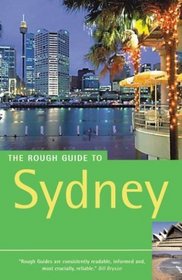Search -
Rough Guide to Sydney 3 (Rough Guide Mini Guides)
Rough Guide to Sydney 3 - Rough Guide Mini Guides
Author:
INTRODUCTION It might seem surprising that Sydney, established in 1788, is not Australia’s capital. Yet the creation of Canberra in 1927 – intended to stem the intense rivalry between Sydney and Melbourne – has not affected the view of many Sydneysiders that their city remains the true capital of Australia, and certainly in many ... more »
Author:
INTRODUCTION It might seem surprising that Sydney, established in 1788, is not Australia’s capital. Yet the creation of Canberra in 1927 – intended to stem the intense rivalry between Sydney and Melbourne – has not affected the view of many Sydneysiders that their city remains the true capital of Australia, and certainly in many ... more »
ISBN-13: 9781843531166
ISBN-10: 184353116X
Publication Date: 12/29/2003
Pages: 432
Rating: ?
ISBN-10: 184353116X
Publication Date: 12/29/2003
Pages: 432
Rating: ?
0 stars, based on 0 rating
Genres:
- Travel >> Australia & South Pacific >> Australia >> Sydney





